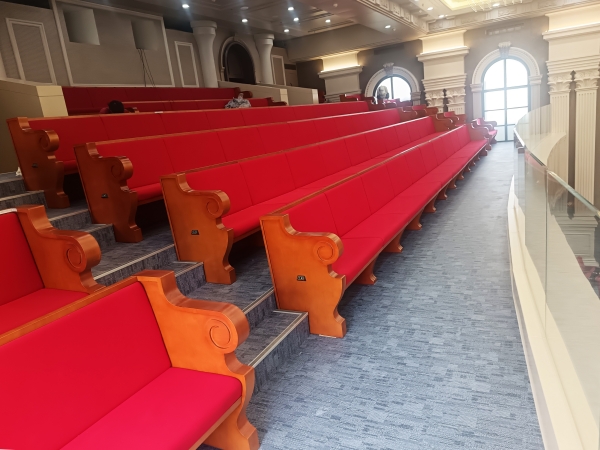In the daily use of churches, the comfort, durability and aesthetics of church chairs are all crucial. However, the procurement budget is often limited. How to save costs while ensuring quality is a problem faced by many church managers. This article will provide you with a reasonable allocation plan for the procurement budget of church chairs to help you make a cost-effective choice.
1. Clarify the budget structure and first distinguish between "rigid needs" and "optional options"
The procurement budget of church chairs generally includes the following aspects:
The cost of the product itself (unit price of chairs × quantity)
Transportation and installation costs
Customization or special design additional costs
Long-term maintenance and replacement reserve budget
Based on these factors, the budget is divided into several key parts:
Core seat cost (60%-70%): ensure basic comfort and durability.
Transportation and installation (10%-15%): consider logistics and assembly costs.
Long-term maintenance (5%-10%): reserve some funds for repairs or replacement of accessories.
Emergency reserve (5%-10%): to deal with market price fluctuations or additional demand.

2. Where are the budget savings? Three sources of income and three savings
a. Centralized procurement and compressed unit price:
When purchasing a large number of church chairs, it is recommended to directly connect with the manufacturer, bypass the middleman, obtain wholesale prices, and the unit cost can be significantly reduced.
b. Standard models are preferred, and personalized designs are appropriate:
Unnecessary, complex carvings or special-shaped structures should not be selected. The manufacturer's existing classic styles are usually more cost-effective and have a shorter delivery cycle.
c. Localized production and distribution:
Choosing manufacturers that produce nearby and provide logistics services can effectively reduce transportation and installation costs, especially in large quantities and complex on-site layouts.
3. Cost control from a long-term perspective
The budget should not only look at the "purchase at the moment", but also measure the total investment from a 3-5 year usage cycle. A durable and easy-to-maintain church chair often saves you hidden costs such as maintenance, replacement, and labor during use.
For example: Chair A is cheap, but after three years the surface will crack and the frame will become loose, requiring some or even the entire batch of chairs to be replaced; whereas Chair B is slightly more expensive, but after five years it will remain stable and easy to maintain, and its overall operating costs are lower.
Navigation
Contact Us
0086 13927706942
0757-86513332
Huangji Road, Jiujiang Nanhai, Foshan, Guangdong, China
Leaving a message. :